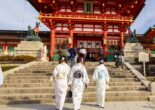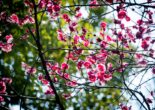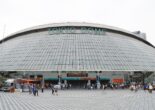The futuristic district of Odaiba has its own futuristic train: The Yurikamome. This train runs on concrete tracks from the train station in Shimbashi to the Toyosu shopping center, passing a number of the newer sights of Tokyo on the way – and climbing the Rainbow Bridge in the process. Read more about how to ride it and what you will see here.
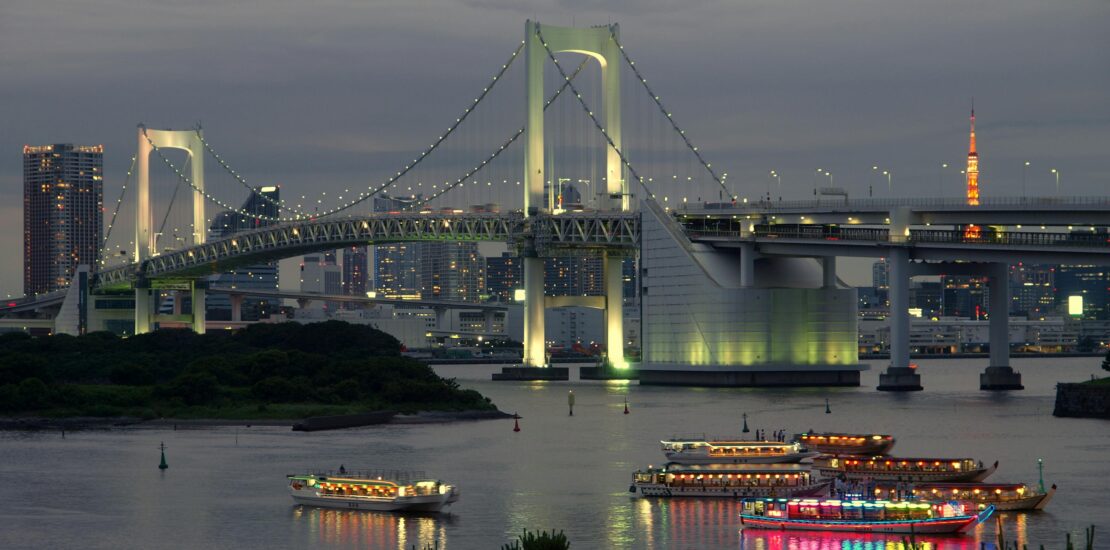
The Yurikamome is a Tokyo train, but not any train. It runs across the futuristic island of Odaiba all the way on rubber wheels – and without a driver.
Sitting in front of the Yurikamome is an exhilarating experience, and a favorite among any children traveling with you. Watching the train from the drivers seat (even if there is no driver) is something any train lover aspires to, and not just small kids to judge from the riders on the commuter runs of the Yurikamome.
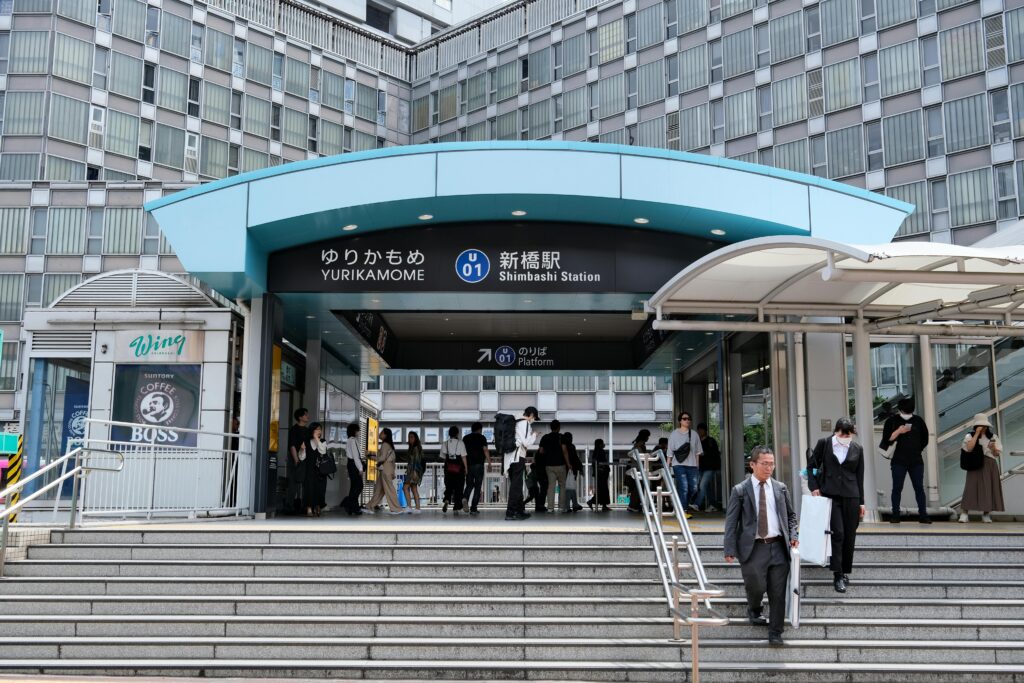
The Yurikamome is the most prominent of the driverless trains in Tokyo, but it is not the only one. The Nippori-Toneri Liner uses the same technology but it runs through suburbs in a boring and unromantic way, and the tracks cover only two thirds the distance of the Yurikamome.
The third driverless train in Tokyo runs to Kanazawa-Hakkei station in southern Yokohama, the station for the aquarium cum amusement park of Hakkeijima Sea Paradise.
No Human Drivers on the Yurikamome
Like the Yurikamome and the Nippori-Toneri Liner, the trains are completely automated, with no human control of the operation. Since the trains run on a concrete through, they do not interact with other traffic or trains, and not with the trains moving in the other direction. There is no need for a driver, even when the train approaches a crowded station. And stations and trains can be crowded during the rush hour. Since the Yurikamome driverless trains are the easiest way of going from the residential areas in Odaiba to the subway station in Shimbashi, many government employees use the train to get from their homes in the Odaiba housing complexes to their offices in the morning.
Morning Driverless Crowd on the Train
While the crowding usually does not get to the same level as the regular commuter trains, it can still be unpleasantly crowded on workdays. Better to wait until after 0930 or so, when most of the commuter traffic is gone.
The Yurikamome train passes through some of the most modern areas of Tokyo. It starts out next to the high-rise area of Shiodome, an area that used to be the main marshalling train yard of Tokyo Station (and before that a muddy seashore). The tall skyscrapers next to the Shinkansen tracks are neighbored by an old neighborhood (as old as neighborhoods get in Tokyo), which means you can get a fascinating view into the backyards of the locals, if not their houses.
Duck Hunting Garden in Odaiba
The train then passes one of the traditional gardens of Tokyo, the Hama-Rikyu Gardens, which used to be the duck hunting grounds of the shogun. You will not see much, since there are high rises in the way, but you will be able to get a glimpse of one of the few places where there is a monument to the ducks killed during the hunts.
The first stop of the Yurikamome is Takeshiba station, where you can see the ferries being loaded that take passengers and freight to the southern Tokyo islands. As you may know, the main islands of Okinawa are at the same latitude as Hawaii. What you may not know is that there is a chain of small islands directly to the south of Tokyo (and administratively part of Tokyo) that stretch to the same latitude as Hawaii.
Volcanic Tokyo Islands
Mostly volcanic, and featuring amazing beaches in the warm Philippine sea, the most famous are probably the today uninhabited (and uninhabitable) Iwo Jima, subject to multiple movies about World War II.
The Yurikamome train continues to the island of Hinode, where there is another ferry terminal, and a pier for the Tokyo Harbor water buses.
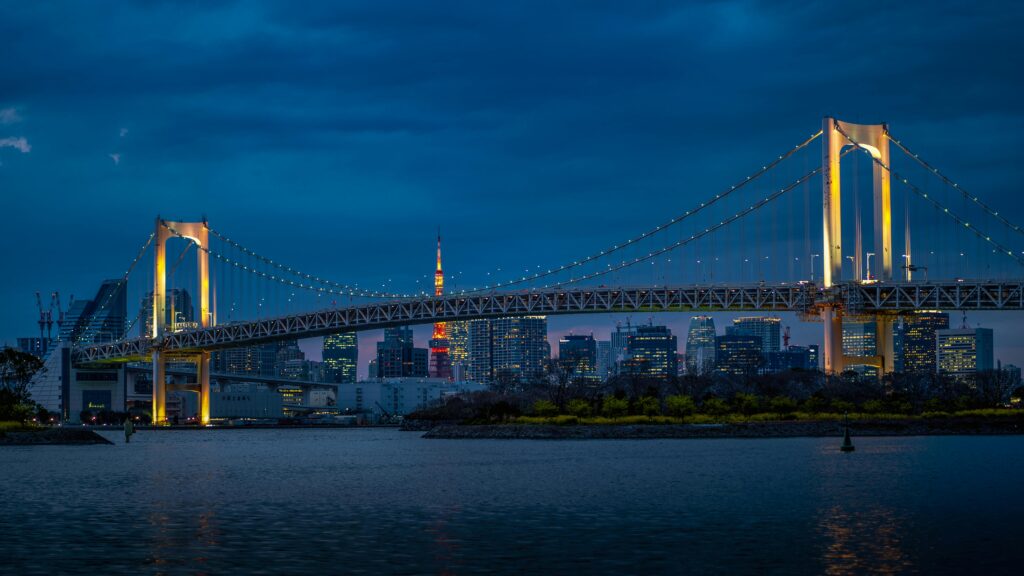
But you should stay on the Yurikamome, because now is when the excitement starts. The train joins the highway and starts the climb up the Rainbow Bridge.
The bridge rises more than five floors above the ground, and trains (and cars) climb in a loop until they reach the free crossing across Tokyo Bay, offering unprecedented views of the city and harbor.
Descent to Odaiba
The train and bridge gradually descend onto the main island of Odaiba, passing the old forts built to keep foreign ships away from Edo. The forts, the peak of 17th-century technology, proved woefully inadequate against the ”black ships” of Commodore Perry, and were retired as Japan modernized without even having fired at invaders once.
The Tokyo harbor islands, empty of previous population, were perfect for industrial and logistic hubs, and the focus of much of the development in the newly re-christened Tokyo. Today, the Odaiba area has become a pleasure and shopping area, with condominium complexes growing to fill up the islands. That is not to say they are the only thing there. Odaiba Island has one of the few public beaches in Tokyo, and the seaside park is a great place for a walk, with beautiful sea views and surprises like a replica of the Statue of Liberty — donated by France, not the US.
Growing Harbor Islands
The islands themselves are still continuing to grow. As you descend the Rainbow Bridge, you are likely to see the building site where the next island in the chain is constructed. The latest iteration was the Olympic Village used for athletes during the 2020 Olympic Games in 2021, and then sold as condominiums.
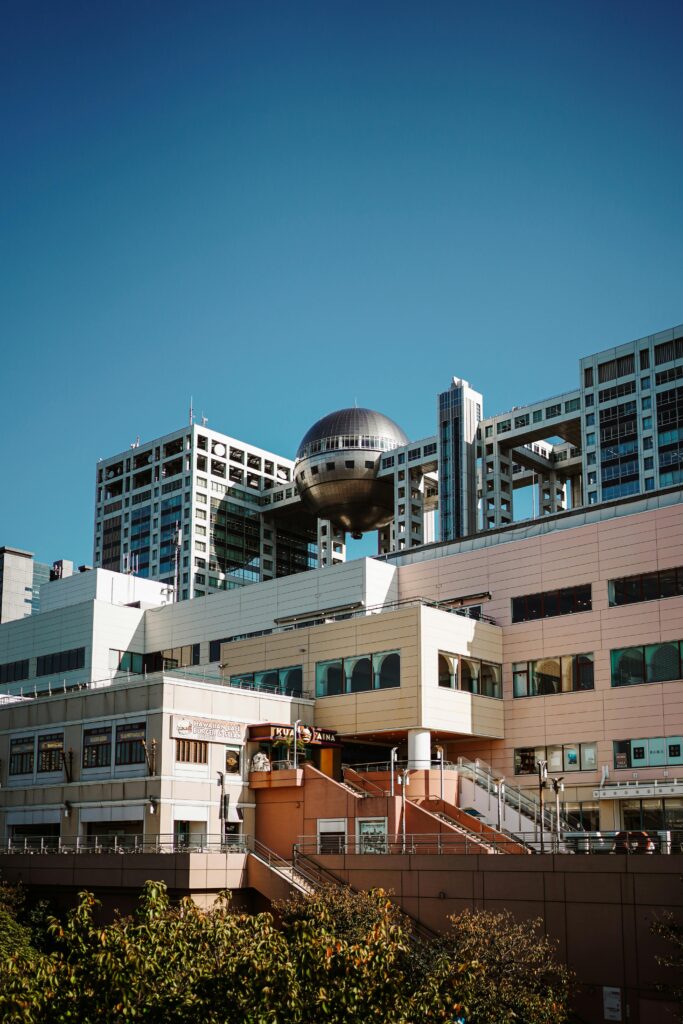
The train continues along the seashore past the Fuji Television building, with the big globe in the middle (you can go in it, it has an observatory), and just as it turns, you can catch a glimpse of the Unicorn Gundam statue.
Futuristic future museum in Odaiba
As the train turns, it passes between two interesting museums: the Maritime Museum, showcasing the Japanese maritime heritage (focusing on the last 100 to 150 years); and the Museum of the Future, one of several museums in Tokyo showcasing the fascination of the Japanese with technology, especially the technology of the future.
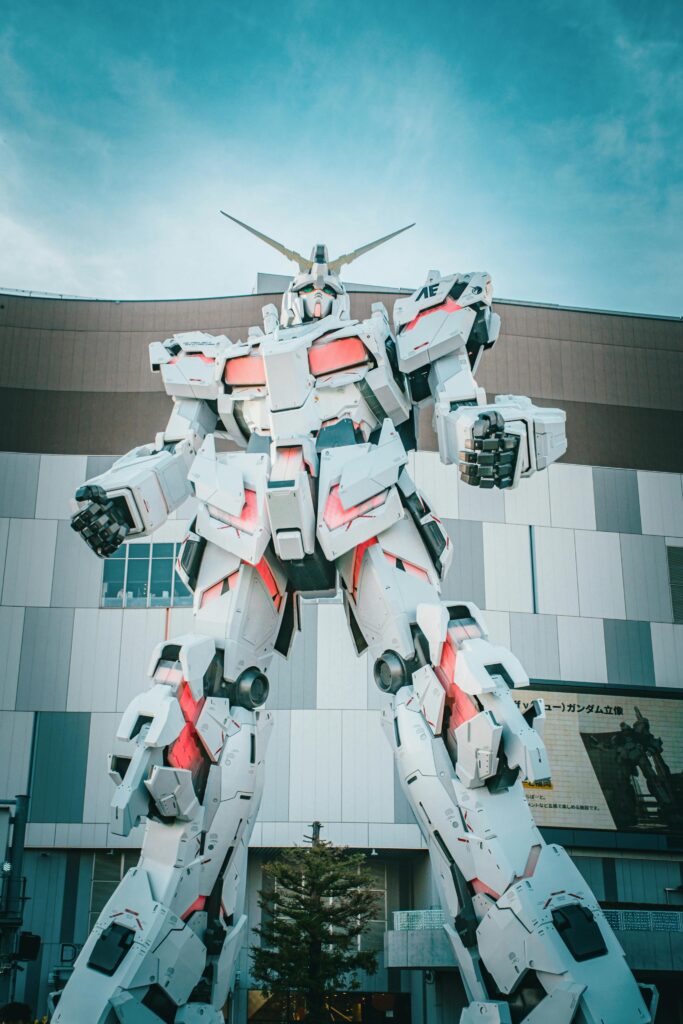
The train then passes the Tokyo Teleco Center, renamed from the original name of Tokyo Teleport, constructed in an age when telecommunications included huge satellite antennas. The building is worth a visit for those interested in architecture.
The train then turns to run along the side of the canal until it gets to Tokyo Big Sight, an exhibition center you may recognize if you are fond of anime. The iconic space houses a huge exhibition center, one of several in the Tokyo area.
Relocated Fish Auctions
The train then makes a 90-degree turn, and when making the next turn, it passes the Toyosu fish market. It has been several years since the iconic fish market moved from the previous Tsukiji location, vacating a space that was used for the press center during the 2020 Olympic Games. The tuna auctions are now held in a space visible but separated from the public, so no YouTubers try to lick the fish. The auctions are held very early in the morning, before the Yurikamome runs, however.
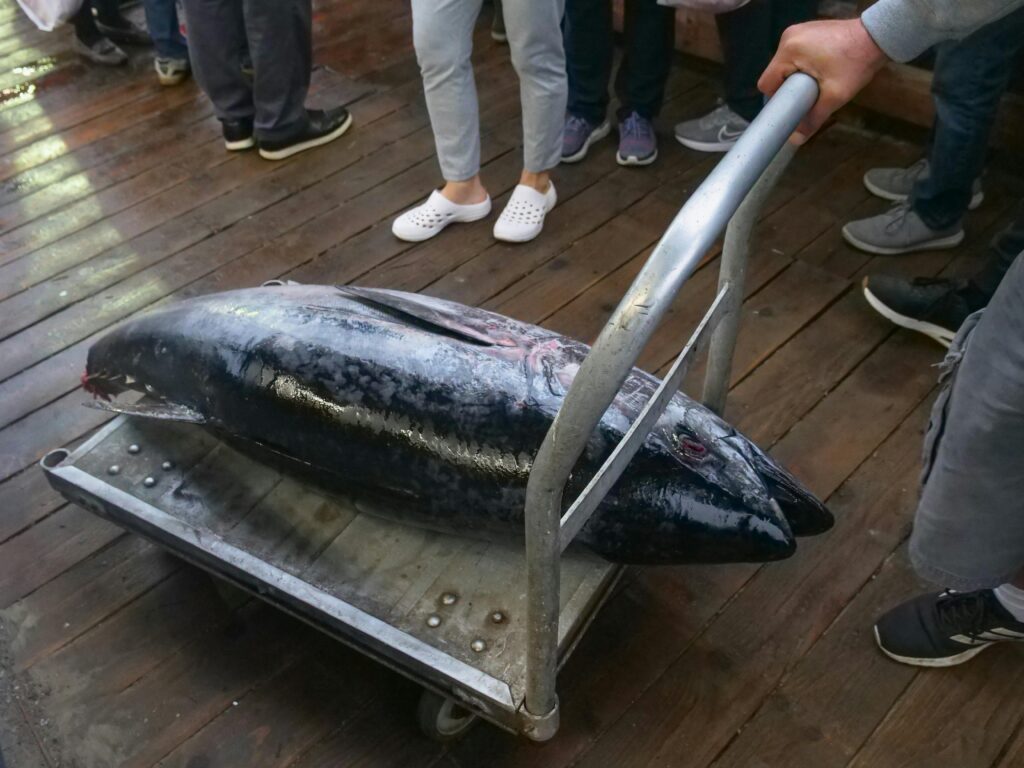
Having passed the fish market, the last stop before the Toyosu end station is the location of the Tokyo Team Labs experience, a multimedia exploration. Since it is immensely popular (especially with foreign visitors) you have to make your reservations well in advance.
Stay tuned for more exciting content like this! Follow us on our social media platforms and check out our blog regularly to stay updated on the latest news, trends, and insider stories from Japan. Don’t miss out on future updates—sign up for our newsletter for exclusive content delivered straight to your inbox!
Related Articles
Warning: Undefined array key "sfsi_threadsIcon_order" in /home/veremosglobal/tokyoroomfinder.com/public_html/blog/wp-content/plugins/ultimate-social-media-icons/libs/controllers/sfsi_frontpopUp.php on line 165
Warning: Undefined array key "sfsi_blueskyIcon_order" in /home/veremosglobal/tokyoroomfinder.com/public_html/blog/wp-content/plugins/ultimate-social-media-icons/libs/controllers/sfsi_frontpopUp.php on line 170
Warning: Undefined array key "sfsi_bluesky_display" in /home/veremosglobal/tokyoroomfinder.com/public_html/blog/wp-content/plugins/ultimate-social-media-icons/libs/controllers/sfsi_frontpopUp.php on line 266

